Cultural and Historical Events
Jacob Lawrence's Art and Life
-
The outbreak of World War I stimulates a major wave of African American migration from the South to the North, known as the Great Migration. Although black migrants had been making their way North since 1890, this massive shift is brought about by social and economic factors, including the demand for labor, lynching, the fear of violence, the scourge of the boll weevil, major flooding in the Black Belt, the lack of political power, and segregation and discrimination. The migrants hope for high-paying jobs in cities such as New York, Pittsburgh, Chicago, and Detroit, where industry is gearing up for war.
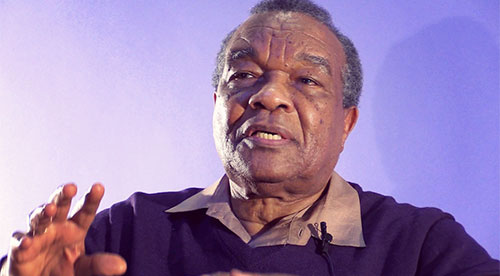
David Driskell on Jacob Lawrence’s The Migration Series [1:49]
-
July 28: Approximately 8,000 African Americans join the Silent Parade (organized by W. E. B. Du Bois and the NAACP), marching down Fifth Avenue in silence to protest racial discrimination, murder, and anti-black violence. It was the first parade of its kind in New York, and the second instance of blacks publicly demonstrating for civil rights.
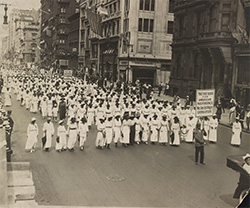
Silent Parade on Fifth Avenue, New York City 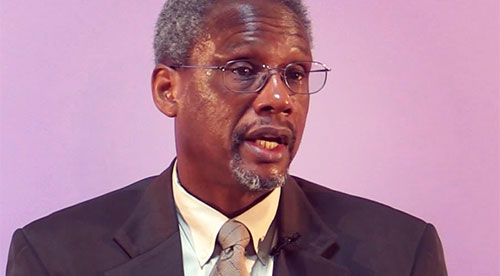
Spencer Crew on migration’s impact on the civil rights movement [2:20] September 7: Jacob Armstead Lawrence is born in Atlantic City, New Jersey to parents Jacob and Rosa Lee Lawrence
-
Carter G. Woodson's A Century of Negro Migration is published.
-
During the "Red Summer of Hate," African Americans react angrily to widespread lynching and other violence directed against them. Race riots overtake Chicago, Charleston, Omaha, Knoxville, Washington, DC, and 20 other American cities from April to early October. In response, Claude McKay publishes the poem "If We Must Die."
Lawrence family moves to Easton, Pennsylvania, where daughter Geraldine is born.
-
Emmett J. Scott's Negro Migration During the War is published; it is one of several primary sources Lawrence consults for The Migration Series of 1940-41.
The first major book of the Harlem Renaissance, Claude McKay's novel Harlem Shadows, is published.
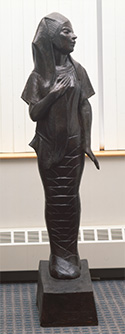
Meta Warrick Fuller, Ethiopia Awakening, 1921 Meta Warrick Fuller's sculpture Ethiopia Awakening is shown at the Making of America exhibition in New York.
Between 1910 and 1920, New York's black population rose by 66 percent, Chicago's by 148 percent, Philadelphia's by 500 percent, and Detroit's by 611 percent.
Harlem's most famous night club, the Cotton Club, opens at 142nd Street and Lenox Avenue.
-
Pianist, composer, and band leader Duke Ellington arrives in New York with his band, the Washingtonians.
Bessie Smith records “Down Hearted Blues” and “Gulf Coast Blues,” followed three years later by “Back Water Blues.” She becomes the most famous female blues singer in the US and the highest-paid black entertainer of her day.
-
Marian Anderson performs at New York's Town Hall, launching her career as a classical singer.
Lawrence's parents separate. Rosa Lee Lawrence moves with the children to Philadelphia where another son, William, is born.
-
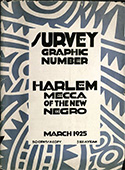
Survey Graphic, March 1925 March: In "Harlem: Mecca of the New Negro," published in Survey Graphic, critic and writer Alain Locke identifies a profound new pride, independence, and intolerance of bigotry in African Americans who move north. The same issue points to Harlem as the center of the African American world.
Artist Aaron Douglas arrives in New York and his style, which synthesized modern European, Ancient Egyptian, and West African art, becomes commonly associated with the art of the Harlem Renaissance.
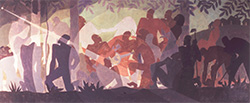
Aaron Douglas, Aspects of Negro Life: An Idyll of the Deep South, 1934 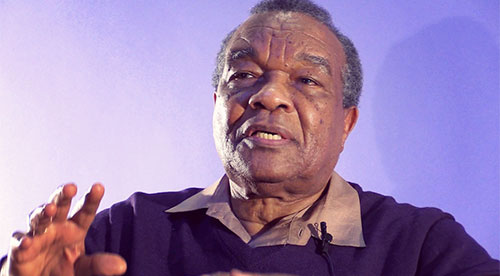
David Driskell on Alain Locke and Jacob Lawrence’s distinctive style [1:58]
-
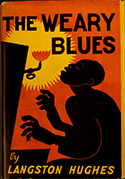
Langston Hughes's first volume of poetry, The Weary Blues, is published.
The Harmon Foundation holds its first annual art exhibition of works by African American artists, and Palmer Hayden wins first prize for his seascape Shooners. Hale Woodruff wins second prize for Two Women.
-
Duke Ellington begins a four-year residency at the Cotton Club. A series of radio broadcasts from the venue gain Ellington national and international fame for his innovative style and compositions.
Rosa Lee Lawrence moves to New York City. The children remain in foster homes in Philadelphia until 1930.
-
October 24: The stock market crashes, ushering in a deep economic depression with high unemployment that persists through the late 1930s. Migration from South to North slows substantially until World War II spurs the second Great Migration.
-
By 1930, Harlem has the largest concentration of African Americans in the country and is home to 72 percent of African Americans in New York City.
Rosa Lee Lawrence moves the family to 142 West 143rd Street in Harlem. Lawrence attends grammar school at P.S. 68 and Frederick Douglass Junior High School (P.S. 139). After school he attends the day care program at Utopia Children's House (also called Utopia Children's Center) at 170 West 130th Street, which was founded by James Wells. There, Lawrence studies arts and crafts with Charles Alston.
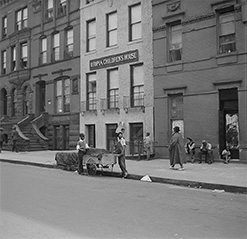
Jack Allison, New York, New York, 1938 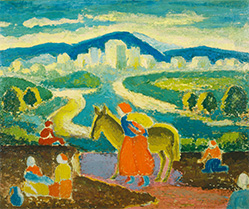
James Lesesne Wells, Journey to Egypt, 1931
-
March 25: Nine young black men are falsely accused of raping two white women on a train near Scottsboro, Alabama. Without adequate representation, they are soon convicted by an all-white jury; eight are sentenced to death. The case, which goes through multiple trials and appeals, sparks demonstrations in Harlem and highlights the racism and miscarriages of justice so many blacks face in the South.
Alain Locke publishes “The American Negro as Artist,” in which he states that a unique African American aesthetic sensibility could be translated into art.
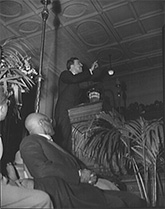
Adam Clayton Powell, Jr., 1942 Attends church service and Sunday school at Abyssinian Baptist Church, where he hears Adam Clayton Powell Jr. deliver sermons.
-
Artist Augusta Savage opens the Savage School of Arts and Crafts in Harlem.
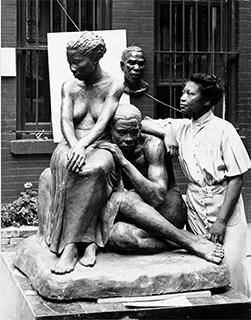
Augusta Savage, c.1938 Attends the High School of Commerce until 1934 and continues to study with Charles Alston at the WPA Harlem Art Workshop, located in the New York Public Library's 135th Street branch and sponsored by the College Art Association.
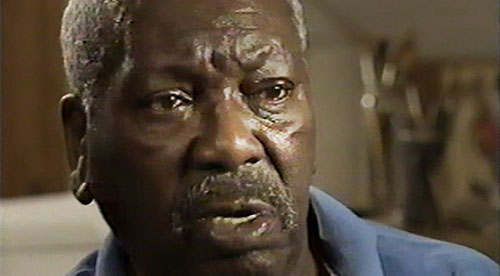
Jacob Lawrence on his mentor Charles Alston [1:19]
-
January 16: The Apollo Theater opens with a performance of "Jazz a la Carte," featuring Benny Carter and his Orchestra, Ralph Cooper, and Aida Ward. Lawrence becomes a regular there. It becomes the premier destination for musical and theatrical performances in Harlem, featuring comedians such as Dewey "Pigmeat" Markham and Jackie "Moms" Mabley; tap dancer Bill "Bojangles" Robinson; emerging singers Pearl Bailey and Ella Fitzgerald; and famed performers Billie Holiday, Lena Horne, and the Count Basie Orchestra.
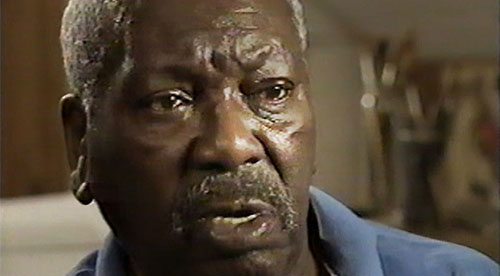
Jacob Lawrence on Harlem’s Apollo Theater and Studio 306 [2:46] Continues to study with Charles Alston and Henry Bannarn after the WPA Harlem Art Workshop moves to 306 West 141st Street. "306" became a gathering place for artists and writers in Harlem, including Aaron Douglas, Countee Cullen, Richard Wright, Ralph Ellison, Alain Locke, Claude McKay, and Langston Hughes. Lawrence rents space in the corner of Alston's studio until 1940.
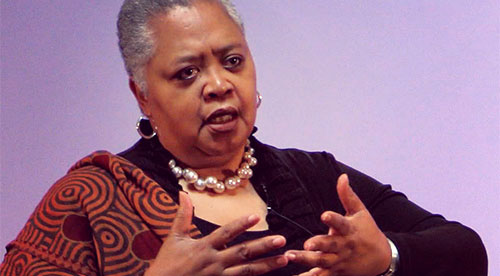
Kinshasha Conwill on Jacob Lawrence and the Harlem community [3:18] In the early 1930s, Lawrence goes regularly to the Metropolitan Museum of Art with his future wife, painter Gwendolyn Knight, as well as artist Ronald Joseph and writer Walter Christmas. There he admires paintings by early Italian Renaissance masters such as Giotto and Duccio.
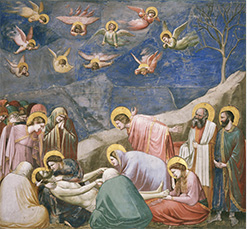
Giotto, The Lamentation, 1305-1306
-
February 15: An Art Commentary on Lynching opens at the Arthur U. Newton Galleries on East 57th Street in New York City. The exhibition, organized by the NAACP and focusing on the mistreatment and murder of African American males in the South, runs for two weeks, with the number of visitors far exceeding expectations.
March 16: Struggle for Negro Rights opens at the American Contemporary Art Gallery in Greenwich Village. The exhibition is organized by members of the Artists' Union and several Communist-affiliated organizations, including the John Reed Club. Three days after its closing, the Harlem Riot is sparked by anger over discrimination by white-owned businesses. Three people die, hundreds are wounded, and an estimated $2 million in damages are sustained to properties in the area.
Meets Charles Seifert, a lecturer and historian with a large library of African and African American literature. Seifert inspires Lawrence to focus on the historical narrative and struggle of people of African descent and encourages him to utilize his library and the Arthur Schomburg Collection at the New York Public Library for research. Lawrence also participates in bus trips organized by Seifert to museum exhibitions, including African Negro Art at the Museum of Modern Art. It was one of the first exhibitions in the United States to display African sculptures as works of art rather than as ethnographic objects.

Walker Evans, Untitled, 1935, from African Negro Art exhibition Begins painting scenes of life in Harlem, using commercial tempera paints on lightweight brown paper. Early paintings depict his immediate environment, including his studio, street scenes of his neighborhood, and everyday life in Harlem.
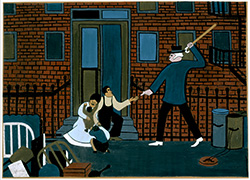
The Eviction, 1935 Exhibits his work in group exhibitions at the Alston-Bannarn Studios at 306 West 141st Street.
-
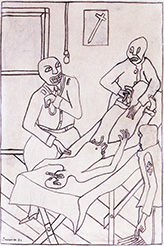
Infirmary, 1936 Works for six months in the Civilian Conservation Corps (CCC) near Middletown, New York; makes drawings of life in the CCC, including Sore Back and Infirmary.
After seeing W. E. B. DuBois's play Haiti at the Lafayette Theater, begins research on Haiti in the Division of Negro History, Literature, and Prints at the 135th Street branch Library in preparation for a 41-panel series—The Life of Toussaint L'Ouverture.
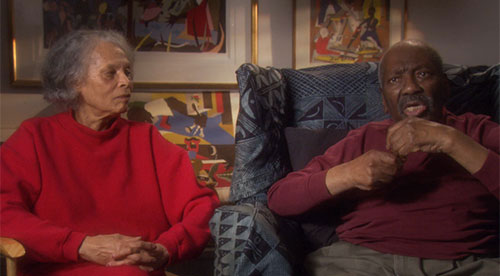
Jacob Lawrence on his series The Life of Toussaint L’Ouverture [1:19] 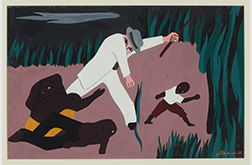
The Life of Toussaint L'Ouverture, No. 7: As a child, Toussaint heard the twang of the planter's whip and saw the blood stream from the bodies of slaves., 1938
-
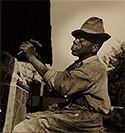
William Edmondson, 1937 William Edmondson is the first African American artist to be featured in a solo show at the Museum of Modern Art, New York.
Viking Press publishes Have You Seen Their Faces, a pictorial survey about the rural South by photographer Margaret Bourke-White and novelist Erskine Caldwell.
May 30: Chicago police officers shoot and kill ten unarmed demonstrators in Chicago during the Little Steel Strike. The tragedy is dubbed the Memorial Day Massacre. Artist Phillip Evergood paints American Tragedy in response.

The Chicago Memorial Day Incident With the assistance of artist Harry Gottlieb, obtains a two-year scholarship to American Artists School at 131 West 14th Street. Studies with Gottlieb, Eugene Morley, Anton Refregier, Philip Reisman, and Sol Wilson.
-
June 8: Arthur A. Schomburg dies. In 1926, his gift of a large private collection of African American books and manuscripts to the New York Public Library (NYPL) became the cornerstone of its the Division of Negro Literature, History, and Prints, 135th Street Branch Library. In 1940, the Division is renamed the Schomburg Collection of Negro Literature, History, and Prints.
Archibald MacLeish's Land of the Free, featuring MacLeish's poems alongside documentary photographs by Dorothea Lange, Walker Evans, Arthur Rothstein, and Ben Shahn, is published.
Forty Acres and Steel Mules by Herman Clarence Nixon is published. The book explores the rural South and features photographs by Walker Evans, Dorothea Lange, and Arthur Rothstein.
With the assistance of Augusta Savage, is accepted into the WPA/FAP easel division. For 18 months, Lawrence submits two paintings every six weeks to the division.
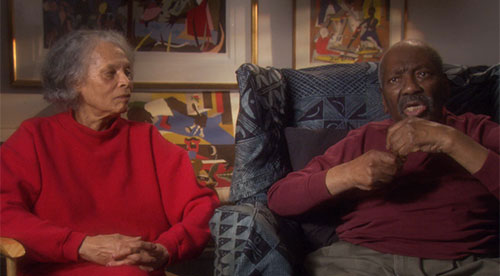
Jacob Lawrence on Augusta Savage [1:29] Has first solo exhibition at the Harlem YWCA. Also exhibits in Twenty-one NYC Negro Artists with a tour to universities
-
February: Hattie McDaniel becomes the first African American actor to win an Academy Award—Best Supporting Actress for her role as Mammy in Gone with the Wind.
March: Billie Holiday performs "Strange Fruit" to a mixed audience at New York's Café Society within weeks of its record release. Written by Abel Meeropol, the song was an incisive commentary on the injustices of lynching.
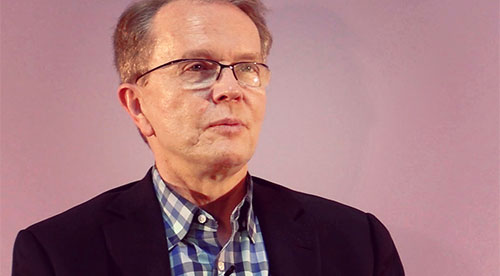
John Hasse on Billie Holiday and 1930s blues [1:15] An American Exodus: A Record of Human Erosion is published. Featuring photographs by Dorothea Lange with text by Paul Taylor, the book documents the Depression-era migration that brought over 300,000 people to California in search of farm work.
The Daughters of the American Revolution in Washington, DC, refuse to allow classical vocalist Marian Anderson to perform at Constitution Hall. First Lady Eleanor Roosevelt intervenes and arranges for Anderson to perform Easter Sunday, April 9, on the steps of the Lincoln Memorial before 75,000 people.
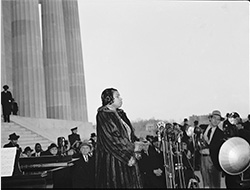
Marian Anderson at the Lincoln Memorial Completes series The Life of Frederick Douglass, comprised of 32 panels.
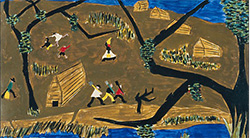
The Life of Frederick Douglass, No. 1: In Talbot County, eastern shore, state of Maryland, in a thinly populated worn-out district inhabited by a white population of the lowest order, among slaves who in point of ignorance were fully in accord with their surroundings—it was here that Frederick Douglass was born and spent the first years of his childhood—February 1818., 1939 Exhibits in a two-person show with Samuel Wechsler at the American Artists School. In a positive review in ARTnews, Lawrence's style is praised as "easy to call primitive...but closer inspection reveals draughtsmanship too accomplished to be called naïve."
The Life of Toussaint L'Overture series is exhibited in a room of its own as part of Contemporary Negro Art at the Baltimore Museum of Art.

Installation of The Life of Toussaint L'Ouverture series at the Baltimore Museum of Art The Life of Toussaint L'Ouverture is exhibited at the De Porres Interracial Council headquarters on Vesey Street, New York, the first solo show by Lawrence outside of Harlem.
-
Between 1940 and 1950, 1.5 million African Americans leave the South for better opportunities, the largest number since the stock market crash of 1929. Western communities experience a large influx of African Americans for the first time.
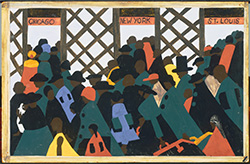
Jacob Lawrence, The Migration Series, No. 1: During World War I there was a great migration north by southern African Americans., 1940-41 Langston Hughes publishes his autobiography The Big Sea, recounting his coming of age in Harlem and Paris in the 1920s.
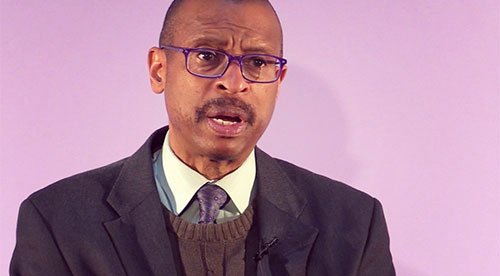
Ethelbert Miller reads excerpt from Langston Hughes's The Big Sea [1:30] Alain Locke publishes The Negro in Art: A Pictorial Record of the Negro Artist and of the Negro Theme in Art, which includes images from Lawrence's The Life of Toussaint L'Ouverture series. The book later inspires Downtown Gallery's Edith Halpert to organize the 1941 exhibition American Negro Art.
Completes series of 31 panels entitled The Life of Harriet Tubman.
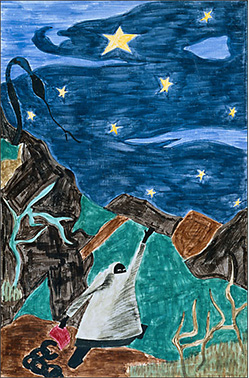
The Life of Harriet Tubman, No. 10: Harriet Tubman was between twenty and twenty-five years of age at the time of her escape. She was now alone. She turned her face toward the North, and fixing her eyes on the guiding star, she started on her long, lonely journey., 1940 Awarded a $1,500 fellowship from the Julius Rosenwald Fund to complete a series of paintings on "the great Negro migration during the World War," which allows him to rent his first studio, an unheated loft at 33 West 125th Street. Artists Romare Bearden and Robert Blackburn, as well as writer Claude McKay also have studios in the building. Begins research on The Migration Series at the Schomburg Collection.
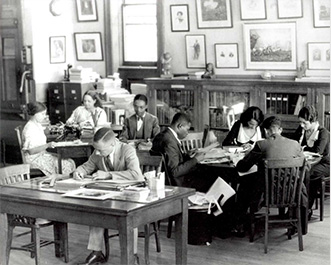
The New York Public Library's 135th Street branch, 1938 Meets Jay Leyda, assistant film curator at MoMA, who becomes an important early champion, seeing the kinship between Lawrence's serial format and storyboards for film. Leyda introduces Lawrence to Mexican artist José Clemente Orozco while he is working on his Dive Bomber and Tank mural at the museum.
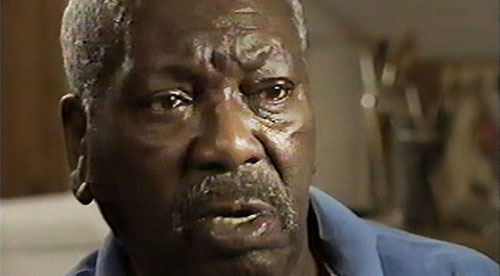
Jacob Lawrence on Jay Leyda, former MoMA film curator, and meeting José Clemente Orozco [1:13] The Life of Frederick Douglass and The Life of Harriet Tubman are exhibited at the Library of Congress, Washington, DC, in commemoration of the 75th anniversary of the Thirteenth Amendment.
-
Twelve Million Black Voices: A Folk History of the Negro in the United States is published, with text by Richard Wright and photo editing by Edwin Rosskam. It contains nearly 150 photographs from the Farm Security Administration. Let Us Now Praise Famous Men, a book highlighting the plight of Depression-era Alabama sharecroppers with text by James Agee and photographs by Walker Evans, is published.
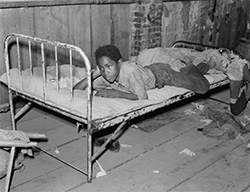
Russell Lee, Boy resting on bed in attic of sharecropper shack. New Madrid County, Missouri, 1938 A. Philip Randolph plans a March on Washington to protest exclusionary governmental hiring practices. The March is averted when President Franklin D. Roosevelt signs Executive Order 8802, which outlaws discrimination in the federal government and defense industries.

Tuskegee airmen, 1945 The US Army Air Corps begins training African American pilots at Alabama’s Tuskegee Institute and nearby Moton Field. They become known as the Tuskegee Airmen.
September: Blues singer Josh White, who performed at the opening of American Negro Art, releases Southern Exposure: An Album of Jim Crow Blues. White collaborated with Harlem poet Waring Cuney on the six compositions that focus on racial segregation and injustices against blacks in the South.
December 7: America enters World War II following the attack on Pearl Harbor, increasing production of munitions, clothing, food, and warships and thus boosting the need for more laborers in the North.
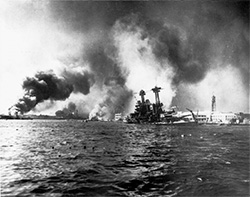
US Navy battleship USS California sinking alongside Ford Island, Pearl Harbor Works simultaneously on the 60 panels of The Migration of the Negro (later renamed The Migration Series), completing them with the assistance of Gwendolyn Knight, who prepares the gesso panels and helps write the captions.
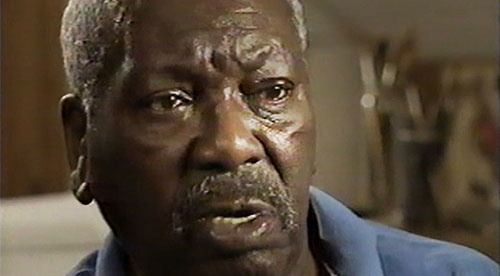
Jacob Lawrence on working with Gwendolyn Knight on The Migration Series [1:51] Alain Locke introduces Lawrence's work to Edith Halpert of the Downtown Gallery. Halpert subsequently arranges for 26 panels from the series to be included in the November issue of Fortune magazine accompanied by text. She also arranges for the series to be featured in Downtown Gallery's exhibition American Negro Art: Nineteenth and Twentieth Centuries, which opens at the end of the year.
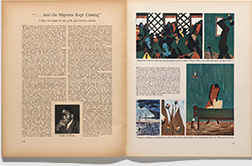
Fortune Magazine, November 1941 July 24: Marries Knight. They travel to New Orleans, their first trip to the South, and stay through the end of the year. While in New Orleans, he paints The Life of John Brown, a series of 22 images depicting the life of the man whose raid on Harper's Ferry, West Virginia, helped bring about the Civil War. He also paints images of life and segregation in the South.
Edith Halpert sells works Lawrence completed in New Orleans that depict life in the South. By early the next year, the artist joins the gallery’s roster of modern artists, which includes Stuart Davis, John Marin, and Charles Sheeler. Lawrence becomes one of the first African American artists with commercial representation.
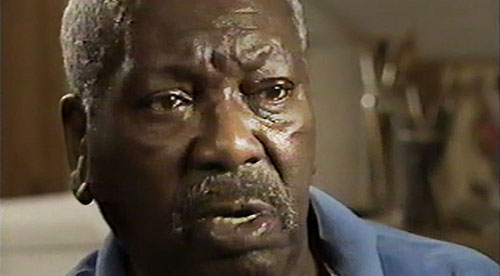
Jacob Lawrence on Edith Halpert’s American Negro Art exhibition [2:20] December 8: In the aftermath of Pearl Harbor, Edith Halpert still moves forward with her intended opening of American Negro Art. The exhibition soon attracts MoMA director Alfred Barr and Phillips Memorial Gallery director Duncan Phillips, who both express enthusiasm for Lawrence's Migration Series.
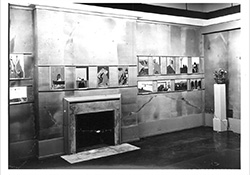
Installation of The Migration of the Negro at Downtown Gallery
-
The Congress of Racial Equality (CORE) is formed in Chicago. It becomes instrumental in the civil rights movement for organizing the "freedom rides" of 1961.
January: African American photographer Gordon Parks moves to Washington and joins the FSA. A few days after moving, Parks takes his first photograph in Washington, American Gothic, his signature image of the African American cleaning woman Ella Watson.
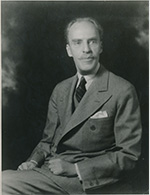
Duncan Phillips, 1940s February: Adele Rosenwald Levy, daughter of Julius Rosenwald, purchases the even-numbered works in The Migration of the Negro for the Museum of Modern Art. Soon after, while the series is being shown at the Phillips Memorial Gallery, Phillips purchases the odd-numbered panels. Each pays $1,000. That October, MoMA sends the series on a two-year national tour.
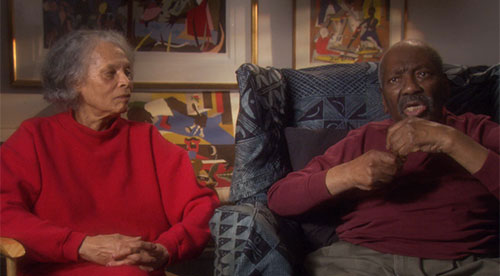
Jacob Lawrence on Edith Halpert’s sale of The Migration Series [0:41]
-
January 23: Duke Ellington has his Carnegie Hall debut with his jazz symphony Black, Brown, and Beige, a composition he likens to a "history of the Negro in America." The sold-out performance was attended by Eleanor Roosevelt, Langston Hughes, Alain Locke, Marian Anderson, and Frank Sinatra, among many others.
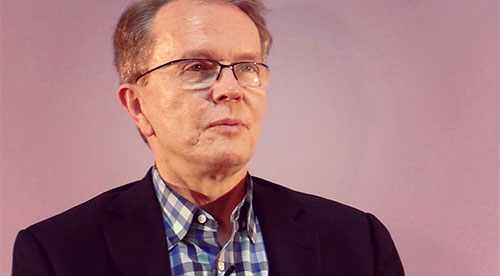
John Hasse on Harlem’s jazz legend Duke Ellington [2:06] August 1–2: A race riot erupts in Harlem after a white police officer shoots and wounds Robert Bandy, an African American soldier, who had inquired about a woman's arrest for disorderly conduct. The riot lasts two days, resulting in six deaths and nearly 600 arrests, as well as vandalism and property destruction.
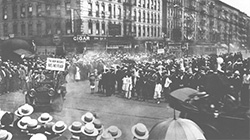
Harlem Race Riot, 1943 James A. Porter publishes Modern Negro Art, which includes the work of Jacob Lawrence, Horace Pippin, and William Edmondson in a chapter entitled "Naïve and Popular Painting and Sculpture."
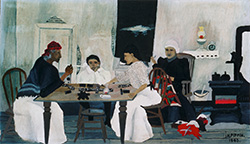
Horace Pippin, Domino Players, 1943
-
The first mechanical cotton pickers revolutionize the industry. By the end of the decade, a major reduction in demand for laborers marks the end of the sharecropping and tenant system.
Swedish Nobel-laureate economist Gunnar Myrdal publishes An American Dilemma: The Negro Problem and Modern Democracy, a study of race relations commissioned by the Carnegie Corporation in 1938.
Inducted into the US Coast Guard as a steward's mate. Assigned to USS Sea Cloud, Boston, the first racially integrated ship in US naval history. Paints scenes of Coast Guard life.
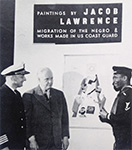
Lawrence at his exhibition at the Museum of Modern Art Solo exhibition at the Museum of Modern Art, Paintings by Jacob Lawrence: Migration of the Negro and Works Made in US Coast Guard, which receives positive reviews. Of The Migration Series, Art Digest wrote, "No professional sociologist could have stated the case with more clarity and dignity."
-
May 8: Germany surrenders.
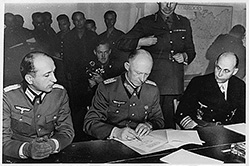
Colonel General Alfred Jodl signs the Instrument of Surrender September 2: Japan surrenders, ending World War II. By the end of the war, one million African American men and women have served in the US military.
-
Teaches at Black Mountain College in Asheville, North Carolina, as part of the Summer Arts Institute Faculty at the invitation of Josef Albers. Other faculty members include Anni Albers, Walter Gropius, and Leo Amino.
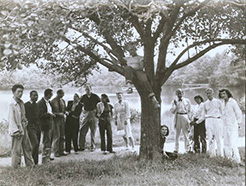
Summer Arts Institute faculty, Black Mountain College, 1946 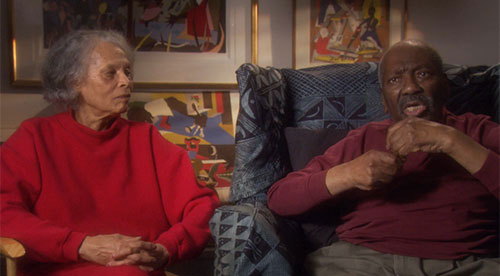
Jacob Lawrence on Josef Albers and Black Mountain College [1:39] Included in Three Negro Artists: Horace Pippin, Jacob Lawrence, Richmond Barthé at the Phillips Memorial Gallery.
-
April 10: Baseball player Jackie Robinson becomes the first African American player on a major league baseball team in the modern era.
Commissioned by Walker Evans to execute paintings of Negro life in the Southern "Black Belt" for Fortune magazine. Travels to Vicksburg, Mississippi; Tuskegee, Alabama; New Orleans; and Memphis. Three of the 10 paintings are published in the magazine in August 1948.
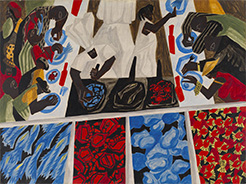
In the Heart of the Black Belt: Cat Fish Row, 1947 With aid from a Guggenheim Fellowship, completes the 14-panel War series.
-
July 26: The military is officially desegregated through Executive Order 9981, signed by President Harry S. Truman.
Langston Hughes's collection of poems One-Way Ticket, is published, with illustrations by Jacob Lawrence.
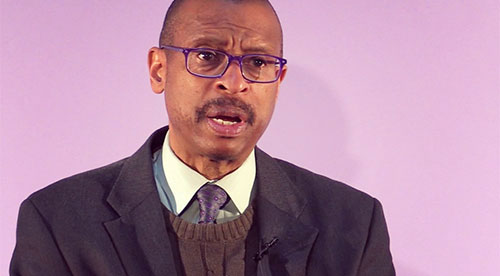
Ethelbert Miller on Langston Hughes as poet of the Great Migration [2:03] Exhibits for the first time at the Venice Biennale.
-
Poet Gwendolyn Brooks becomes the first African American to win a Pulitzer Prize for her poetry collection Annie Allen.
Voluntarily enters Hillside Hospital, Queens, for treatment of depression. Lawrence stays there from July through November 1949, and from January through August 1950. While in treatment, he paints images of life in the hospital.
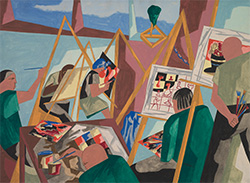
Creative Therapy, 1949 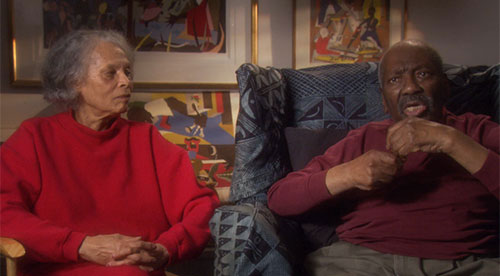
Jacob Lawrence on his experience in a mental hospital [0:41]
-
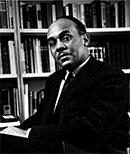
Ralph Ellison, 1961 Ralph Ellison's widely acclaimed novel Invisible Man presents a powerful account of how a young educated black man comes to terms with the alienation of a racially divided American society of the 1920s and 1930s.
-
Edith Halpert and longtime Downtown Gallery employee Charles Alan create a new gallery—the Alan Gallery—to represent the work of the younger artists from the Downtown Gallery, including Lawrence. The Downtown Gallery continues to represent the artists who have been with the gallery for 30 years or more, including Stuart Davis, Charles Sheeler, and John Marin. Lawrence is unhappy with the arrangement.

Stuart Davis, Egg Beater No. 4, 1928
-
On May 17, the Supreme Court rules on Brown v. Board of Education of Topeka, Kansas, unanimously agreeing that segregation in public schools is unconstitutional. The ruling paves the way for large-scale desegregation.
-
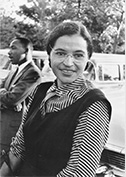
Rosa Parks, c. 1955 December 1: Rosa Parks refuses to give up her seat at the front of the "colored section" of a bus to a white passenger. She is arrested. The black community of Montgomery, under the leadership of Reverend Martin Luther King Jr., boycotts the bus system for more than a year until the US Supreme Court rules in favor of desegregating the buses. The boycott ends on December 21, 1956.
-
After two years, completes first 30 panels of Struggle... From the History of the American People series but decides not to complete the remaining 30 panels. The series is exhibited in 1956 and 1958 at the Alan Gallery, and is acquired by a private collector but later dispersed into individual collections.
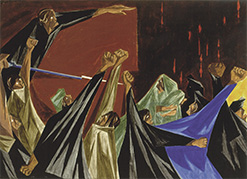
Struggle ... From the History of the American People, No. 1: ... Is Life so dear or peace so sweet as to be purchased at the price of chains and slavery?, 1955
-
September: Nine black students are blocked from entering Central High School in Little Rock, Arkansas, on the orders of Governor Orval Faubus. President Dwight D. Eisenhower sends federal troops and the National Guard to intervene on behalf of the students, who become known as the "Little Rock Nine."

Soldiers escorting the Little Rock Nine into Central High School
-
Alvin Ailey founds the Alvin Ailey American Dance Theater in New York City.
-
Lorraine Hansberry's A Raisin in the Sun is the first play by an African American produced on Broadway.
-
A lunch counter sit-in at Woolworth's in Greensboro, North Carolina, spurs a series of non-violent protests across the South.
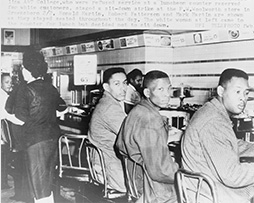
Lunch counter sit-in, Greensboro, North Carolina Solo retrospective opens at Brooklyn Museum and tours nationally to 16 other venues.
-
Over the spring and summer of 1961, more than 1,000 student volunteers, black and white, begin taking bus trips through the South to test out new laws that prohibit segregation in interstate travel facilities, which includes bus and railway stations. Several groups of "freedom riders," as they are called, are attacked by angry mobs along the way.
Begins paintings on contemporary civil rights and themes of interracial marriage, integrated education, and nonviolent protest.
Travels to Nigeria accompanying an exhibition including works from the Migration and War series. Lectures on the influence of African sculpture on European and American Modernist art, particularly Cubism.

Jacob Lawrence at the M'Badi arts center The Migration of the Negro is exhibited at The Phillips Collection, Washington, DC.
-
April 16: Martin Luther King Jr. is arrested and jailed during anti-segregation protests in Birmingham, Alabama, where he writes his seminal "Letter from Birmingham Jail," arguing that individuals have the moral duty to disobey unjust laws.
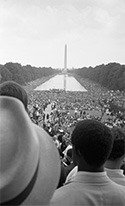
March on Washington August 28: About 200,000 people join the March on Washington. Congregating at the Lincoln Memorial, participants listen as Martin Luther King Jr. delivers his famous "I Have a Dream" speech.
September 15: Four young girls attending Sunday school are killed when a bomb explodes at the Sixteenth Street Baptist Church in Birmingham, a popular location for civil rights meetings. Riots erupt in Birmingham, leading to the deaths of two more black youths.
Completes first limited edition print, Two Rebels, based on a painting of the same theme.
-
The 24th Amendment abolishes the poll tax, which originally had been instituted in 11 Southern states in the late 1800s to make it difficult for poor blacks to vote.
July 2: President Lyndon B. Johnson signs the Civil Rights Act of 1964, prohibiting discrimination based on race, color, religion, or national origin. The law also provides the federal government with the powers to enforce desegregation.
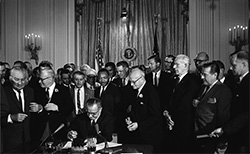
President Lyndon B. Johnson signs the 1964 Civil Rights Act Returns to Nigeria for eight months to teach and steep himself in Nigerian culture so that his paintings "might show the influence of the great African artistic tradition." While there, Lawrence completes paintings and drawings of African life and experiments with new painting techniques.

Street to Mbari, 1964
-
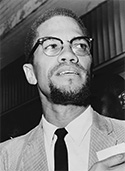
Malcolm X, 1964 February 21: Malcolm X, black nationalist and founder of the Organization of Afro-American Unity, is shot to death.
March 7: Civil rights protestors in Selma, Alabama, begin a march to Montgomery in support of voting rights but are stopped at the Pettus Bridge by police. Fifty marchers are hospitalized after police use tear gas, whips, and clubs against them. The event is dubbed "Bloody Sunday."
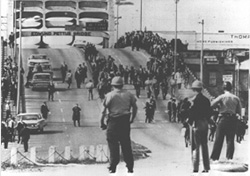
Demonstrators and police in Selma, Alabama August 6: President Lyndon B. Johnson signs the Voting Rights Act of 1965 into law, making it easier for Southern blacks to register to vote by banning literacy tests, poll taxes, and other such requirements.
September 24: President Johnson issues Executive Order 11246, which requires government contractors to "take affirmative action" toward prospective minority employees in all aspects of hiring and employment.
Works as artist-in-residence at Brandeis University, Waltham, Massachusetts. Completes drawings of student protests and police brutality as well as his first known self-portraits.
-
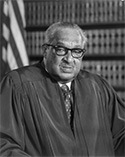
Thurgood Marshall, 1976 October: Thurgood Marshall becomes the first African American to serve on the US Supreme Court.
June 12: The Supreme Court rules in Loving v. Virginia that prohibiting interracial marriage is unconstitutional. Sixteen states that still banned interracial marriage at the time are forced to revise their laws.
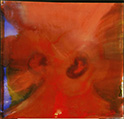
Sam Gilliam, Red Petals, 1967 Artist Sam Gilliam who receives his first solo exhibition at The Phillips Collection, becomes a member of the Washington Color School.
-
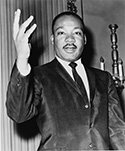
Martin Luther King Jr., 1964 April 4: Martin Luther King Jr. is assassinated at age 39 standing on the balcony outside his hotel room in Memphis, Tennessee.
April 11: President Johnson signs the Civil Rights Act of 1968, prohibiting discrimination in the sale, rental, and financing of housing.
-
The Congressional Black Caucus is established by 15 African American members of Congress to "empower America's neglected citizens and address their legislative concerns."
Reverse African American migration patterns from the North to the South continue over the ensuing decades. In 1970, nearly half of the United States’ African American population lives in the South, with 1 in 4 living in metropolitan areas, and 1 in 8 based in New York, Chicago, Philadelphia, Los Angeles, and Detroit.
Accepts professorship at the University of Washington, where he continues to teach until retiring in 1983.
Becomes the first visual artist to receive the Spingarn Medal, the NAACP's highest award.
Commissioned by Edition Olympia to create a silkscreen print for the 1972 Munich Olympic Games. Creates image of five black runners, referencing Jesse Owens's triumphant victory in Berlin in 1936.
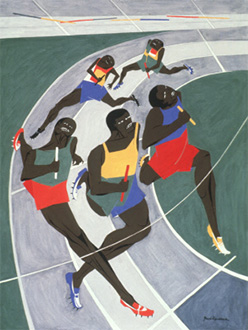
Munich Olympic Games, 1971
-
The Equal Employment Opportunity Act, which prohibits workplace discrimination on the basis of race, among other things, is passed.
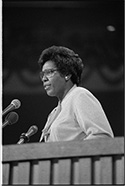
Barbara Jordan, 1976 Barbara Jordan of Texas is elected to Congress. She is the first African American woman to be elected from a Southern state.
September 10–October 23: The Migration of the Negro by Jacob Lawrence is exhibited at The Phillips Collection.
-
Whitney Museum of American Art opens retrospective of Lawrence's paintings that travels to five other US venues.
-
Begins association with Francine Seders Gallery, Seattle, which also represents prominent Northwest modernists including Mark Tobey and Kenneth Callahan.
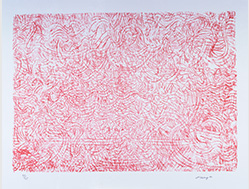
Mark Toby, Mandarin and Flowers, 1973
-
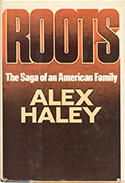
August 17: Alex Haley's Roots: The Saga of an American Family is published by Doubleday. Hayley receives a Pulitzer Prize and the mini-series adaptation of the book becomes one of the most watched shows in the history of television.
Cofounds the Rainbow Art Foundation in New York with Romare Bearden, Willem de Kooning, and Bill Caldwell to assist young printmakers in the production, exhibition, and marketing of their work.
-
Commissioned by the Presidential Inauguration Committee in Washington, DC, to create a limited edition print for a portfolio commemorating the inauguration of President Jimmy Carter. Lawrence depicts an ethnically diverse crowd straining to see the event from a great distance.
-
Supreme Court rules against fixed racial quotas for college admissions in Regents of the University of California vs. Bakke.
-
Completes first mural commission—Games—for Kingdome Stadium in Seattle, Washington.

Games, 1979
-
Artist Jean-Michel Basquiat gains attention in the art world for his paintings, which address race and class struggles.
In the 1970s and 1980s, the black population of the South doubled, with the majority of migrants coming from the Northeast and Midwest.
Completes mural—Explorations—for Howard University, which depicts the 12 academic disciplines of the university, dedicated to black educator Mary McLeod Bethune. Completes another mural for the university—Origins—pertaining to African American life and history four years later.
-
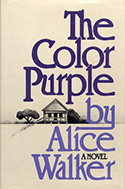
Alice Walker's novel The Color Purple wins the Pulitzer Prize and the National Book Award.
-
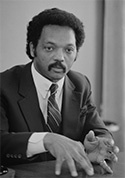
Jesse Jackson, 1983 Jesse Jackson becomes the first male African American (following a female black candidate, Shirley Chisholm, in 1972) to campaign for his party’s nomination for President of the United States and wins several primaries and caucuses. He runs again in 1988.
-
Martin Luther King Jr.’s birthday is first celebrated as a federal holiday.
Begins working with Lou Stovall Workshop, Inc., Washington, DC, to re-create images from The Life of Toussaint L'Ouverture as silkscreen prints.
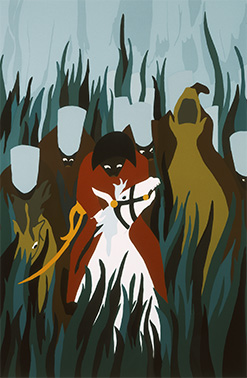
The Life of Toussaint L'Ouverture, No. 17: The Capture of Marmelade, 1987 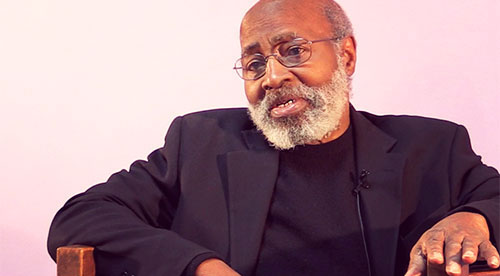
Lou Stovall on Jacob Lawrence’s Toussaint L’Ouverture prints [1:26]
-
Ron Brown is elected head of the Democratic National Committee, becoming the first African American to head a major national political party.
Sculptor Martin Puryear is chosen to represent the US at the São Paulo Biennale in Brazil and wins the exhibition's grand prize. He is the first African American to solely represent the US at an international art exhibition.
Receives the Artist Award from the College Art Association, the NAACP Third Annual Great Black Artists Award, and the Images Award for Outstanding Achievement in Art from the University of Pittsburgh.
In 1989, collaborates with Workshop, Inc. to produce the print Amistad to commemorate the 1839 mutiny aboard the Amistad slave ship.

Lou Stovall on Jacob Lawrence’s Amistad prints [2:20]
-
The US Census reveals the diversity of the United States with growing segments of the African American, Asian, and Hispanic populations. African Americans comprise 12 percent of the total US population with over half residing in southern states.
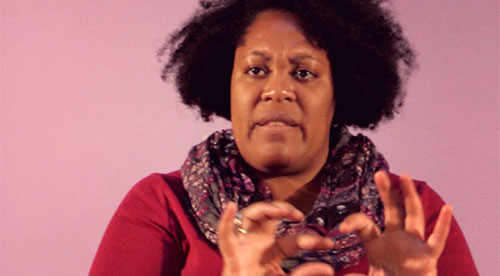
Jacqueline Lawton on the relevance of Jacob Lawrence’s The Migration Series [2:29] Receives the National Medal of Arts from President George H.W. Bush.
-
April 29–May 4: Race riots erupt in south-central Los Angeles after a jury acquits four white police officers videotaped beating African American Rodney King. Widespread looting and arson causes over $1 billion in damage and 53 deaths.
-
Author Toni Morrison becomes the first African American to win the Nobel Prize in Literature. She receives the Presidential Medal of Freedom in 2012.
September: The Migration Series is exhibited at The Phillips Collection in Washington, DC. A two-year tour follows.
-
Catalogue raisonné of prints is published and accompanies a nationally traveling exhibition organized by the Bellevue Art Museum, Washington. Peter Nesbett begins preliminary research for a catalogue raisonné of paintings, drawings, and murals.
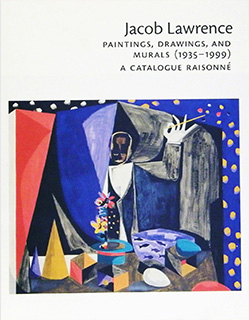
-
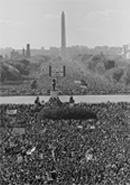
Million Man March Hundreds of thousands of African American men gathered on the National Mall in Washington, DC, as part of the "Million Man March" to address issues in the black community and show solidarity.
-
Between 1900 and 1996, record numbers of African American migrants move from the North to the South. Among the fastest growing cities for black residents are Atlanta, Dallas, and Washington, DC.
-
A lawsuit is brought against the US Department of Agriculture by African American farmers who claim loan discrimination in Pigford v. Glickman.
With Knight, Lawrence, establishes the Jacob and Gwendolyn Lawrence Foundation to promote the creation, exhibition, and study of American art.
-
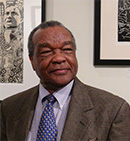
David C. Driskell Artist and scholar David C. Driskell is awarded a National Humanities Medal by President Bill Clinton. The following year, he opens the David C. Driskell Center at the University of Maryland, College Park, to preserve and present visual art and culture of African Americans and of the African diaspora.
June 9: Two years after being diagnosed with cancer, dies at home in Seattle at age 82.